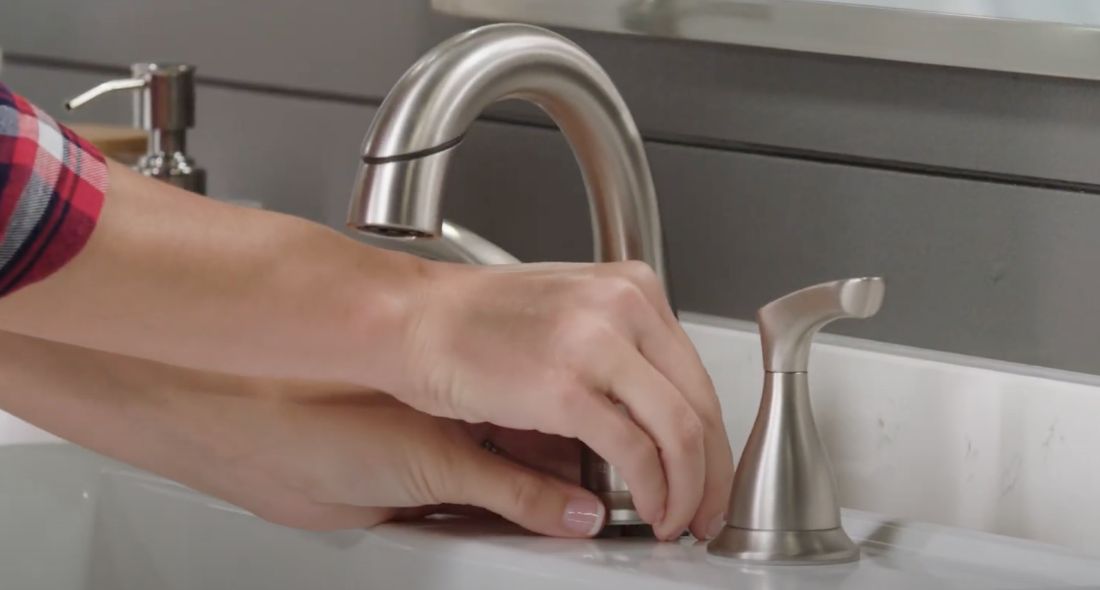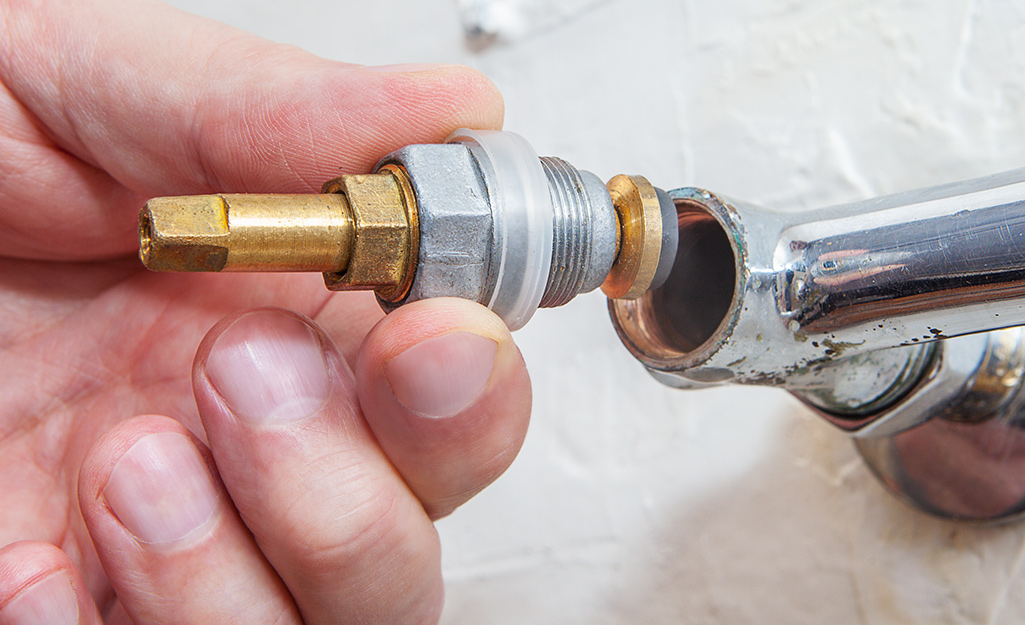How It's Crucial to Mend a Leaking Faucet
How It's Crucial to Mend a Leaking Faucet
Blog Article
On this page in the next paragraphs you might get lots of really good advice concerning How to Fix a Dripping or Leaky Faucet .

Dripping faucets might look like a small aggravation, however their impact goes beyond just the annoyance of the audio. From drainage to incurring unneeded economic prices and health and wellness dangers, disregarding a trickling tap can cause different effects. In this write-up, we'll look into why it's important to address this typical house concern quickly and successfully.
Wastefulness of Water
Ecological Effect
Trickling faucets add considerably to water wastage. According to the Epa (EPA), a solitary faucet trickling at one drip per secondly can throw away more than 3,000 gallons of water each year. This not only stress water resources yet also influences communities and wildlife depending on them.
Financial Prices
Boosted Water Costs
Beyond the environmental effect, dripping faucets can pump up water costs substantially. The gathered wastage over time translates into higher energy costs, which could have been stayed clear of with timely repairs.
Prospective Residential Property Damages
Additionally, prolonged leaking can result in harm to fixtures and surface areas bordering the faucet. Water accumulation can create staining, rust, and even structural problems if left ignored, causing additional fixing costs.
Health and wellness Problems
Mold And Mildew and Mold Development
The continuous visibility of wetness from a trickling faucet develops an ideal setting for mold and mildew development. These fungis not only compromise indoor air high quality however also present wellness threats, specifically for people with respiratory problems or allergies.
Waterborne Conditions
Stationary water in dripping taps can become a breeding ground for microorganisms and other pathogens, boosting the risk of waterborne diseases. Contaminants such as Legionella microorganisms grow in stagnant water, potentially bring about serious illnesses when consumed or inhaled.
Do it yourself vs. Expert Fixing
Pros and Cons of DIY Repair Service
While some might try to repair a leaking faucet themselves, do it yourself repairs feature their very own set of challenges. Without appropriate understanding and devices, DIY attempts can aggravate the issue or cause insufficient repairs, extending the trouble.
Advantages of Hiring a Specialist Plumber
Working with a professional plumber makes sure that the underlying reason for the leaking faucet is addressed properly. Plumbers have the proficiency and tools to detect and fix tap problems efficiently, conserving time and decreasing the danger of more damage.
Step-by-Step Overview to Dealing With a Dripping Tap
Tools Called for
Prior to trying to repair a dripping faucet, gather the needed tools, consisting of a flexible wrench, screwdrivers, substitute parts (such as washing machines or cartridges), and plumber's tape.
Typical Tap Issues and Their Solutions
Determine the kind of faucet and the certain issue triggering the drip. Typical issues include worn-out washers, corroded valve seats, or defective O-rings. Refer to supplier guidelines or on-line tutorials for detailed advice on repair services.
Preventive Measures
Regular Maintenance Tips
To stop trickling taps, do regular maintenance such as cleaning up aerators, examining for leaks, and changing worn-out components quickly. Furthermore, consider mounting water-saving tools or upgrading to more effective components.
Relevance of Prompt Fixes
Addressing trickling taps as soon as they're discovered stops further water wastage and possible damage, inevitably conserving both water and money in the long run.
Influence On Home Value
Understanding of Well-Maintained Property
Maintaining a residential property in good condition, consisting of attending to upkeep issues like dripping taps, improves its perceived worth and desirability among potential purchasers or renters.
Impact on Resale Value
Characteristics with properly maintained plumbing components, consisting of taps, command higher resale worths in the property market. Dealing with trickling faucets can contribute to a favorable impression during property assessments and arrangements.
Environmental Duty
Specific Payment to Conservation
Taking duty for dealing with dripping faucets aligns with wider initiatives towards water preservation and ecological sustainability. Every person's actions collectively make a significant impact on protecting priceless resources.
Sustainable Living Practices
By prioritizing punctual fixings and adopting water-saving routines, people add to sustainable living methods that profit both existing and future generations.
Final thought
Dealing with a dripping tap goes beyond plain benefit; it's a vital action toward saving water, reducing monetary costs, and securing health and property. Whether with do it yourself repairs or expert help, acting to take care of leaking taps is a tiny yet impactful means to promote responsible stewardship of resources and contribute to a healthier, much more sustainable future.
Why Are My Faucets Dripping (And Can I Fix it Myself)?
Causes of a Dripping or Leaking Faucet
Whether you’re hearing drops of water falling and hitting a sink, or noticing water ooze out from the base of the spout, you shouldn’t ignore a dripping or leaking faucet. And, the good news is, sometimes you can fix the problem yourself.
In this article, we’ll review a few common causes of dripping and leaky. We’ll also walk you through some basic ways to find the problem and handle it without calling anyone — and let you know when to call in a pro.
But, no matter what the cause, or whether you can handle it on your own, the sooner you address it, the better.
Each drip may be a tiny amount of water. But, they all add up quickly. According to the U.S. Geological Survey, one faucet losing one drop every 20 seconds — five a minute — wastes around a liter of water every day, and 173 gallons a year.
Add in more than one in your house, and it’s a lot of water to waste. So, we’ll help you get to the bottom of things quickly.
Four Reasons Your Faucet May Be Dripping
Aerator is Damaged or Unseated Valve Seat is Corroded O Ring is Loose or Worn Out Part of the Assembly is Loose Aerator is Damaged or Unseated
If you unscrew the end of your faucet, you’ll find the aerator. It’s the little stem piece with a screen on it that shuts off the water circulation.
If it’s damaged, or if it’s not sitting right, it will allow water to pass through.
Valve Seat is Corroded
Next is the valve seat, which is connected to the washer. If the washer wasn’t in place correctly, then it could have ground against the seat. Over time, this damages the valve seat.
The problem could also be corrosion: Over time, the part has worn out, and it’s now allowing water to pass through.
O Ring is Loose or Worn Out
Since the o ring is only a small rubber gasket, it’s a common reason why the faucet is dripping. You’ll find it at the base of the faucet, and it’s there to keep water from coming out where it’s not supposed to.
However, it’s common for the o ring to wear out over time. When it does, you’ll notice a drip.
Part of the Assembly is Loose
So far, we’ve looked at a few small, specific parts. But, the problem could be anywhere in the assembly if something’s out of place.
Even if a part isn’t damaged, over time, it may have become loose or dislodged. It could be the parts we mentioned, or the aerator at the tip of the faucet, the stem itself,
Can I Fix a Leaky Faucet Myself?
Depending on the problem, and how handy you are, there’s a chance you can fix a leaky faucet without calling a professional. But, you do run the risk of making the problem worse.
If it’s a small drip, you can certainly try a few troubleshooting tactics. We’ll walk you through them in a moment.
But, no matter what, your first step should be shutting off the water coming into the faucet. You should find a shutoff valve under the sink on the pipes leading to it. Turn each one clockwise until they close tightly.
Next, make sure you have the right tools for whatever you’re attempting. It’s tempting to make do with what you have. But, you need the right ones for a reason: You’re often dealing with small parts that can break if you handle them carelessly.
If you’re feeling confident, here are some places to start.
Items Near the Tip of the Faucet
A few of the parts we mentioned — particularly the valve seat and washer — are located at the tip of the faucet where the water comes out. They’re easy to access, making it a good place to start.
Check the O Ring
To check the o ring, you’ll need to take off the spout at the base. It’s easiest on kitchen sinks with long spouts, versus the smaller, bulkier base on most bathroom sinks.
Either way, this can be tricky, so do it carefully and don’t force anything. If it’s not coming right off, you’re much better off calling in a pro than possibly breaking something.
For a kitchen sink, there’s usually a nut or coupling assembly at the base of the spout. These often slide off easily without using any tools.
Once you’ve disassembled those parts, gently but forcefully twist off the spout.
Then, you can see the o rings. There should be two of the rubber gaskets on the base. If they look worn or damaged, replace them, and see if that solves the problem.

Do you appreciate reading up on Leaky Faucets: Why They Happen & What to Do About Them? Create a review below. We would be pleased to find out your insights about this blog. In hopes that you visit us again soon. So long as you liked our blog entry please be sure to share it. Many thanks for your time. Return soon.
Report this page